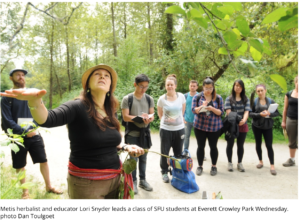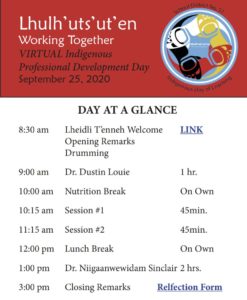My EDUC 490 practicum, which took place at an outdoor, homeschool blended education centre, involved working with students from grade K – 9 with diverse needs, interests, and abilities. This experience was a rich learning opportunity that has helped to shape my pedagogy and practice.
As two of the classes consisted of four grades, there was a necessity to create learning opportunities that were accessible, engaging, challenging and meaningful for each learner. Throughout the four weeks, I got to know about each student, their interests, strengths, and exceptionalities. This understanding helped me adapt lessons so that each learner could access and engage in the learning intention in their own way. To differentiate learning to accommodate for and honour each learners’ diverse strengths, I encouraged learners to express their learning in the way that suited them best (orally, visually, concretely, or written). With a clear learning intention, expressions of learning could be differentiated, helping students become more deeply involved and autonomous over the direction of their own learning journey.
I also noticed that planning inquiry-based learning opportunities that foster problem solving and collaboration helped empower each learner to engage in the lesson using their unique strengths and abilities. For these lessons to be successful, learners needed adequate space, time and support to truly dive into the learning.
One of my goals for this practicum was to more intentionally integrate First Peoples Principles of Learning in my teaching. I focused on teaching to the whole child (physical, emotional, intellectual, and spiritual). At the core of many of my lessons I focused on our connection to the land and each other. With learning primarily happening outdoors, I focused on encouraging learners to connect through their five senses to appreciate, reflect on, and strengthen their connection to the land. I also focused on exploring and appreciating the resilience of our Wet’suwet’en neighbours and the skills, technologies, and perspectives that our Wet’suwet’en ancestors developed which contribute to our current way of knowing by planning lessons that helped students engage in these perspectives and skills.
Another goal of mine in this practicum was to develop my skills in assessment. In my previous practicum, assessment was usually an afterthought. After my Assessment and Motivation course this semester, I now believe that engaging learners in their own assessment can empower them to take responsibility for their learning journey. I experimented with facilitating the co-creation of criteria at the beginning of a lesson with students and writing it on the board to refer to throughout the lesson and conclusion. I felt that the act of co-creating the criteria and expectations as a class gave learners autonomy over, investment in, and responsibility for their learning process and product. I noticed how the co-created criteria on the board helped to create space for self-reflection, rich discussion, and peer feedback during the conclusion of the lesson. In my next practicum, I will continue to experiment with and improve this strategy in hopes of continuing to empower learners to become active members in their own assessment.
Another way I worked on my skills in assessment was by providing meaningful feedback for learners through their e-portfolios. By spending time with students’ e-portfolios, I was able to get a better idea of their growth through their learning continuum, and then provide meaningful, encouraging feedback, while challenging them for future growth. Spending time to provide feedback for learners on this platform also helped to connect to families of these learners, during a time where it is more difficult to connect in person.
In my 10 week 2021 practicum, it is my goal to continue to develop my skills in fostering a learning environment that prioritizes differentiated, student-directed, inquiry based learning that empowers deep, meaningful engagement of the whole learner. I hope to continue to build on integrating meaningful, holistic assessment through the use of a portfolio that can be shared and celebrated with families.



